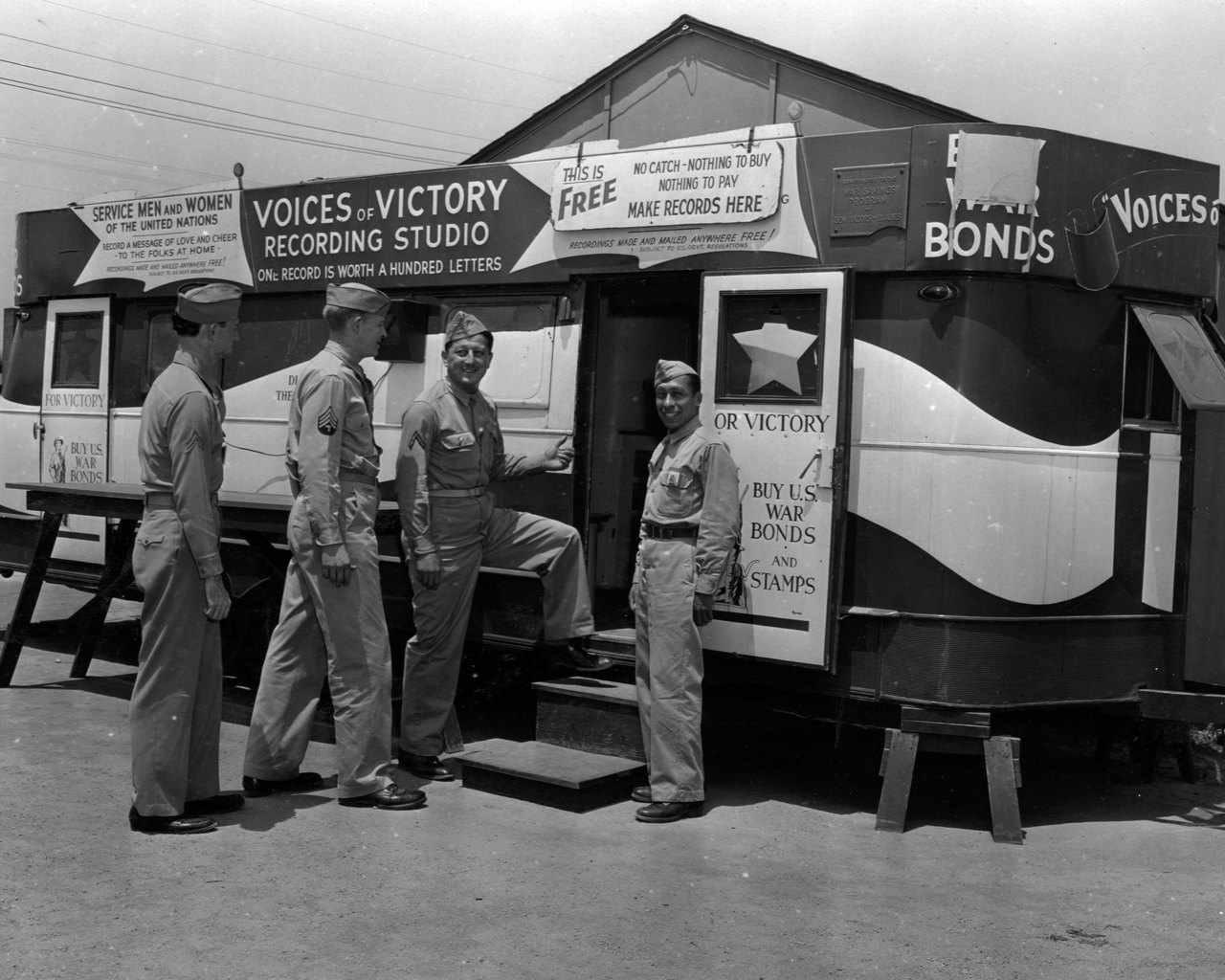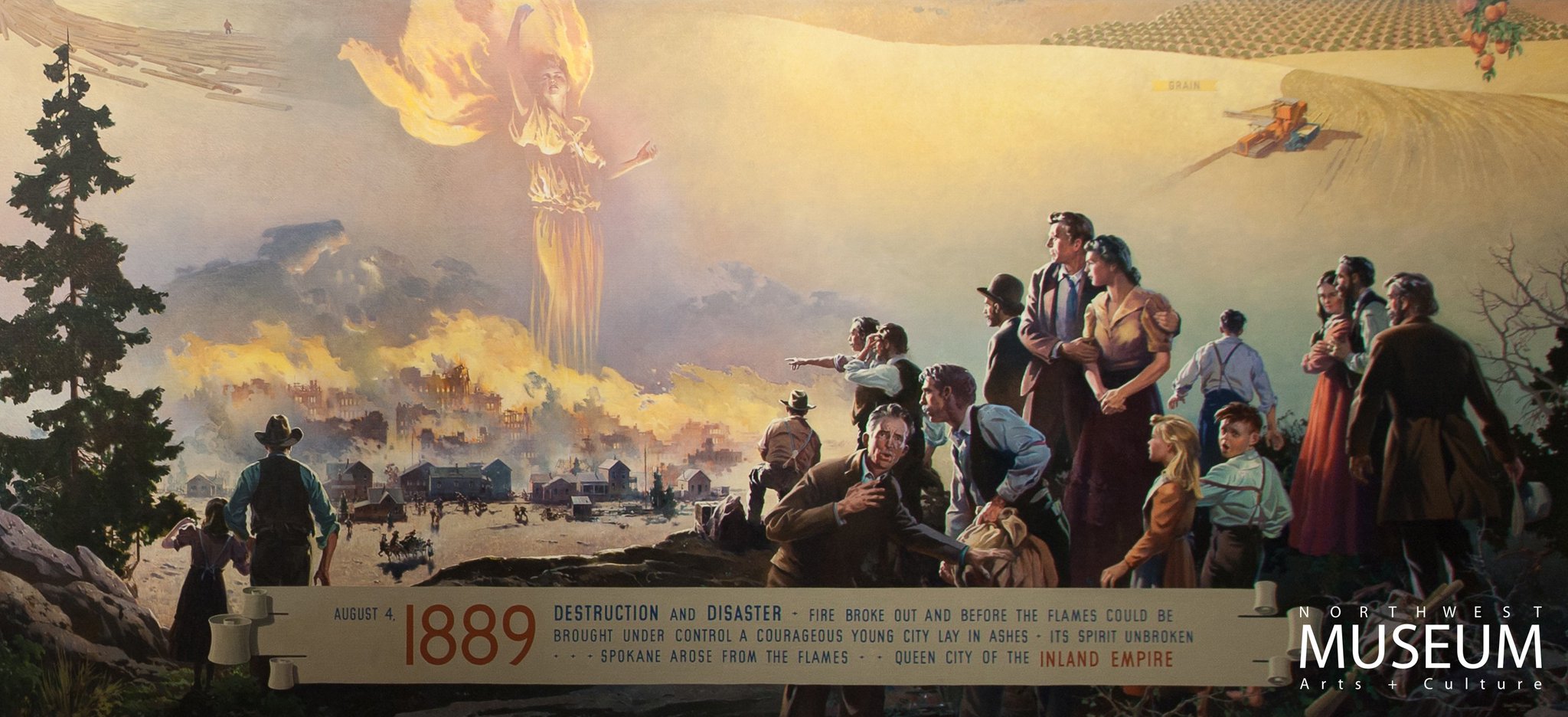 |
| Ye olde Spokane Historical, 2012. |
We got some nice local publicity, and my bosses seemed to like it, so I kept having students write Spokane Historical stories each quarter. The stories online grew from 30 to 60 and more. At first I wondered if we would run out of stories, but as I came (through the writing of my students) to know the city better, I realized that would never be the case. The chronological and geographic range of the stories expanded as well. This spring we posted our 500th story: Chief Skolaskin: Dreamer-Prophet and Political Prisoner by Nicolle Southwick.
In the summer of 2008 I quit my job as a tenured professor at Missouri Southern State University to take on a new, joint position at Eastern Washington University and the Washington State Archives. Digital Archives. The job was to revive the Public History program at EWU and to use it as a bridge for collaborations with the Digital Archives.
I was looking for a digital project to do with my students. The "Jesus phone"--the first iPhone--had recently come out, and it occurred to me that with if people were going to be walking around with personal computers in their pockets, ones that connected to the internet and included GPS locations, there ought to be a way to use those for place-based storytelling. Somehow.

The next year I attended the Museums+Mobile conference, a two-day virtual conference to connect museum types with IT types. The second day was mostly vendor presentations along the lines of "Here is a neat platform we built to sell tacos but you could use it for history!" The platforms were either not quite suited for history work, or expensive, or were in the business of getting you to provide free content so they could sell it. My mind was turning with ideas that I did not know how to implement.
(I should add here that I do not code, or know how to query a SQL database, or anything like that. My training is in ethnohistory.)
A few months later I was at the National Council on Public History conference in Pensacola. At a random dinner I met a friend of friend named Mark Tebeau, then a history professor at Cleveland State University. He showed me his digital project--a smartphone app called Cleveland Historical. I was entranced--this was exactly what I had been looking for. I asked if there was a chance to adapt the software to other communities. He answered that he had come to Pensacola looking for such partnerships. The next year Spokane Historical was launched, using Mark's Curatescape platform.
Spokane Historical transformed my teaching. Writing Spokane Historical stories became the go-to assignment in all my classes. In a digital history class, students will produce rich stories with multimedia like this one. In other public history classes, the story assignments will be simpler, requiring only text and images. The Spokane Historical story assignment fills a lot of public history pedagogical goals. Students learn the importance of place. They learn to do the kind of fine-grained local research that is common in public history, consulting property deeds, newspapers, oral histories and the like. They learn how to write for a public audience--"Tell a bigger story, using fewer words!" I tell them.
| EWU students learning archival research at the Eastern Region Branch of the Washington State Archives, guided by Anna Harbine and Frank Oesterheld. |
The digital aspects of the Spokane Historical assignment are also instructive. Students learn about copyright and permissions. They master some basic tasks like cropping and resizing photos and working with a database. In the digital courses they conduct oral histories and edit audio and video.
Each time I teach a public history class I work with a community partner, and Spokane Historical is often the means of our collaboration. My students have partnered with local museums, community advocacy organizations, local governments, and the National Park Service. Spokane Historical has greatly increased the reputation and visibility of my department and university. And Spokane Historical has taught me about my community. And we get to go on trips! Most classes include a field trip or two to the neighborhood or other place that we are interpreting that quarter. I am not from Spokane, and when I took this job I knew next to nothing about its history. After five years of editing stories, I have a pretty solid knowledge base, one that helps me in other public history work. Thanks, students.
There have been some downsides. When I began this project I was naive about the amount of editing that is required to bring student work up to a publishable quality. Fortunately, my department and the state archives provide funding for two graduate assistants to be assigned to the archives and public history program. Students like Julie Russell, Lee Nilsson, Frank Oesterheld, Anna Harbine, Zach Wnek, Allie Honican, Logan Camporeale, Charlie Byers, Josh Van Veldhuizen and others have edited hundreds of stories, untangling prose, hunting down additional images, and organizing stories into tours. Without their help I would have given up on this project after the first year.
The great visibility of Spokane Historical means that I am often mistaken for the historical society. Every week I get at least one email from a stranger who found Spokane Historical. Can I accept a donation of grandma's photo album? Can I help research a History Day exhibit or a genealogical project? Just this morning a Canadian Scholar asked what more I knew about A.K. Mozumdar. Sometimes they skip the email and just mail me something--an unidentified 100-year-old photograph of a woman that was taken in Spokane Falls, or a collection of yearbooks from Hillyard High School in the 1910s. I forward these queries to people who know more than I do and the objects to the local museum.
| Do you know me? This showed up in the mail one day. |
And there have been professional advantages as well. Because of Spokane Historical, I have been able to serve on NEH review panels, been approached to review books on regional history, given guest lectures, put together conference presentations, and am even sometimes mistaken for a digital historian. When it was time to go up for promotion to full professor, I put forth Spokane Historical as my major piece of scholarship, equivalent to a peer-reviewed monograph. There was a little push back, but with some strong letters of support from public historians at other institutions (thanks guys) I received the promotion.
It has been a wonderful five year ride, with no end in sight. The Curatescape platform has continued to evolve, and the partnerships keep branching out. In this past year we worked with Lake Roosevelt National Recreation Area to create two historical tours of their unit, a project which also led to one of the students getting a National Park Service job after she graduated.
At some point it might make sense to export the project into GIS or something. We will see what the future holds. For now, though, it is more great student stories on Spokane Historical.








